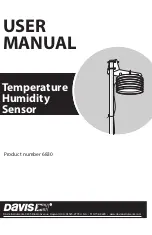
20
Chapter 6
Installation
Regio Midi manual
Terminal
Designation
Operation
33
DI2/CI
Regin’s condensation sensor, KG-A/1 (FS). The sensor is connected
between terminals 33 and 41, AGnd.
alternatively
Window contact (DI). A potential-free contact is connected between
terminals 33 and 40, +C. Closed contact indicates closed window.
alternatively
Run indication from e.g. an air handling unit. A potential-free contact is
connected between terminals 33 and 40, +C.
See Table 5, SW4.
40
+C
24 V DC out common for DI and UI (with digital function)
41
AGnd
Analogue ground, reference for AI and UI (with analogue function)
42
A
RS485-communication A
43
B
RS485-communication B
Table 4. I/O connection terminals for basic models with 3 analogue outputs
DIP switches (only models without display)
The ON-position is marked on the DIP switch.
ON
OFF
Comment
SW4
DI, window contact.
Closed contact indicates
closed window.
CI, Regin’s condensation
sensor, KG-A/1 (FS).
Function terminal 33,
DI2/CI.
SW5
Digital output for 24 V
AC thermal actuator.
Analogue output for
0...10 V DC valve
actuator (FS).
Function terminal 23,
UO1.
SW6
Digital output for 24 V
AC thermal actuator.
Analogue output for
0...10 V DC valve
actuator (FS).
Function terminal 24,
UO2.
SW7
External, PT1000-sensor. Internal NTC-sensor
(FS).
Temperature sensor.
SW8
NO
NC (FS)
Function terminal 23,
UO1
Choosing NC
(FS) gives direct action on output UO1, i.e. increasing signal
(longer pulses) on increasing control output. This setting is used when UO1 is
connected to a thermal actuator of type Regin RTAM-24 (NC). In the event of a
power cut the valve will close.
Choosing NO
gives reverse action on output UO1, i.e. decreasing signal
(shorter pulses) on increasing control output. This setting is used when UO1 is
connected to a thermal actuator of type Regin RTAOM-24 (NO). In the event
of a power cut the valve will open.
Table 5. DIP switches SW4-SW8
















































